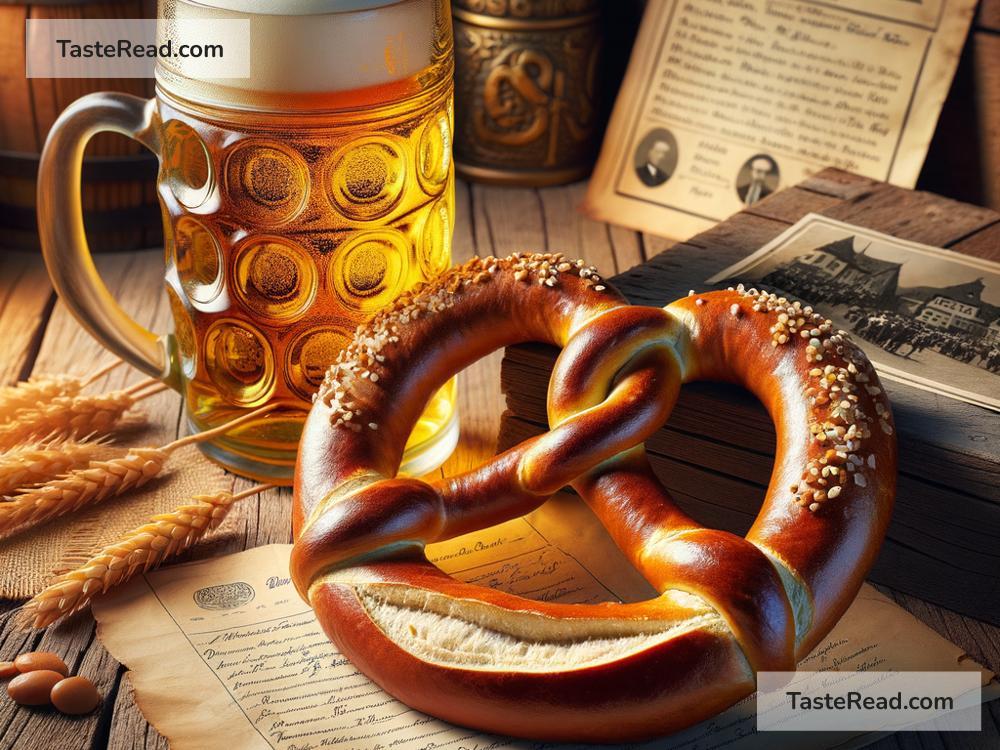The History of the German Pretzel: A Tale of Twist and Tradition
The pretzel is one of the most beloved symbols of German food. With its distinct shape and salty flavor, it’s a snack enjoyed worldwide. But the story of the pretzel is more than just a tale about bread—it’s a story of culture, creativity, and even a bit of mystery. Let’s dive into the fascinating history of the German pretzel and learn how it became a global favorite.
What Is a Pretzel?
Before exploring its history, let’s talk about what a pretzel actually is. A pretzel is a type of baked bread, often twisted into a unique shape that resembles crossed arms. It’s usually made with flour, water, and yeast, and its surface is brushed with lye to create a shiny brown crust during baking. Pretzels are commonly sprinkled with coarse salt, but they can also be topped with sesame seeds, cheese, or even sugar for a sweeter version. Soft pretzels are chewy and warm, while hard pretzels, which are baked longer, are crunchy and more like a snack.
Where Did the Pretzel Come From?
The origins of the pretzel date back as far as the Middle Ages, but nobody knows the exact moment the pretzel was invented. There are many legends about its beginnings.
One popular story claims that the pretzel was first created around the 7th century by monks in Southern Europe. According to this tale, the dough was twisted to look like arms crossed in prayer. The three holes in the pretzel’s shape were said to represent the Christian Holy Trinity: the Father, the Son, and the Holy Spirit. Monks supposedly gifted pretzels to children as a reward for learning their prayers, calling them “pretiola,” Latin for “little reward.” Over time, this name evolved into the word “pretzel.”
Some historians believe the pretzel may have German or Austrian roots. Early records from around 1111 show illustrations of pretzel-like shapes in bakeries and religious texts. Regardless of its exact origin, the pretzel became strongly associated with Germany during the Middle Ages.
Why Did Pretzels Become So Popular in Germany?
Pretzels gained popularity in Germany for both cultural and practical reasons. In medieval times, pretzels were inexpensive to make and used simple ingredients, making them a perfect food for the common people. During Lent, a period of fasting and reflection for Christians, pretzels became especially popular because they didn’t contain eggs, milk, or butter, which were often restricted during this time.
German bakers also began making pretzels a central part of their craft. In the city of Würzburg, pretzels were so important that bakers used them as symbols on signs and flags to identify their profession. Pretzels even played roles in special celebrations and traditions. They were thought to represent good luck, prosperity, and unity, making them popular items to give at weddings or festivals.
By the 15th century, pretzels became a staple in southern Germany, particularly in Bavaria. You’ll still see people snacking on large, soft pretzels at Bavarian beer gardens or Oktoberfest today.
The Legend of the Lye Pretzel
One fascinating detail about German pretzels is the use of lye, a chemical that makes the crust shiny and gives the bread its unique flavor. But how did bakers discover this unusual method?
According to legend, the lye pretzel was created by accident. Sometime in the 18th century, a baker in Bavaria was cleaning his baking trays with lye solution. Lye was often used as a cleaning agent at the time. By mistake, a batch of pretzels fell into the lye. Instead of throwing them away, the baker decided to bake them anyway. The result was astonishing—a shiny, flavorful pretzel that people loved!
Since then, lye has been used to give traditional German pretzels their distinct taste and color. Don’t worry—lye used in baking is harmless once the dough is cooked!
Pretzels Around the World
As Germans migrated to other countries, particularly the United States during the 18th and 19th centuries, they brought their pretzel-making skills along with them. Pretzels became especially popular in Pennsylvania, which still has a large German-American population. Today, Pennsylvania is often referred to as the “pretzel capital of the world.”
In America, pretzels have taken on new forms. Hard pretzel snacks were invented in the United States in the late 19th century, allowing people to enjoy pretzels on the go. Soft pretzels became popular at sports stadiums, carnivals, and movie theaters, often served with mustard or cheese dips.
Across the globe, pretzels are loved in many ways. In Switzerland, people eat pretzels with butter. In Italy, something similar to pretzels, called taralli, is made with olive oil and baked until crunchy. No matter where you go, you’re likely to find a version of this classic snack.
A Symbol of Germany
Today, pretzels are more than just food—they’re a cultural symbol of Germany. They’re served at beer halls, bakeries, and street markets all over the country, often alongside sausages or traditional cheeses. Many Germans feel proud of the pretzel’s deep roots in their history and its worldwide fame.
Whether you enjoy it soft and chewy or hard and crunchy, the pretzel is a treat with a rich past. It may have started as a humble snack, but it’s grown into a global favorite, loved by millions for its simple yet delicious flavor. So, the next time you bite into a pretzel, remember that you’re tasting a piece of history! Bon appétit—or as the Germans say, “Guten Appetit!”


